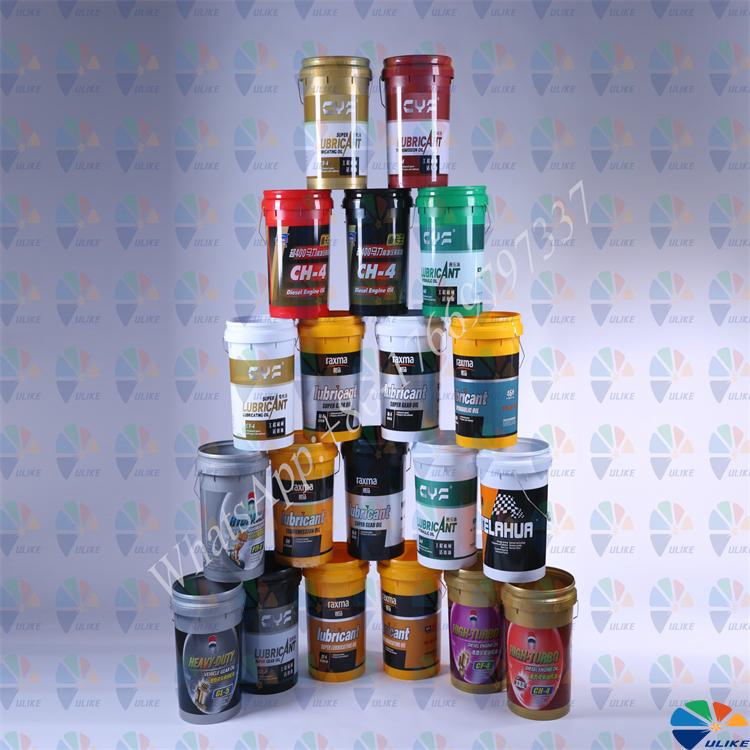Three things to note about in-mold stickers
【Thermal transfer analysis】
Three things to note about in-mold stickers
1-Dust
In-mold stickers are a type of thermal transfer technology. The raw materials, processes, and application methods used are quite different from ordinary thermal transfer processes. What should be paid attention to in-mold stickers during production and processing? The following is a brief introduction for you.
Dust is a tiny particle suspended in the air. It is very floating and easily adheres to the surface of objects. The number one public enemy of thermal transfer in-mold stickers is dust. Once the surface of the in-mold sticker is covered with dust, the printed pattern will be incomplete, and it is easy to have broken points, dirt, etc.
2-Oil stains
Oil stains are a phenomenon caused by the accumulation of oil stains. There are three reasons why the thermal transfer in-mold sticker has oil stains:
1. The in-mold sticker accidentally gets oil stains from the rotating machine during the slitting process;
2. There are oil stains near the storage location that accidentally get on the surface of the in-mold sticker;
3. The surface of the substrate is not cleaned and there are oil stains. If the workshop staff does not notice this, there will be a stain on the surface of the product after injection molding.
Whether in production or processing practice, operators must be cautious and carefully check every link (slitting, storage, processing), and then pick out the flower film and product with oil stains and wipe them clean with cloth. If it cannot be wiped clean, it is recommended to treat it as waste.
3-Increase static electricity
Although there are always many factors to consider when printing in-mold labels, one of the most important considerations is how to put the in-mold sticker in the injection mold just right. To solve this problem, static electricity is the best choice. Using static electricity in the in-mold labeling process has advantages in terms of cost and reliability because it no longer requires a vacuum in the mold.
When static electricity is added to a label with suitable material and structure, the label will be attracted to the grounded metal surface of the mold by static electricity and will be stuck for a few minutes due to its significant adhesion. These few minutes are very critical and often determine whether the in-mold label can be perfectly integrated with the product. If there is not enough static electricity on the in-mold label, it is difficult to print the pattern on the designated position of the product.
Therefore, before injection molding, manufacturers must first understand with the
in-mold label manufacturer whether there is static electricity in their process.
![af]() Afrikaans
Afrikaans![sq]() Albanian
Albanian![am]() Amharic
Amharic![ar]() Arabic
Arabic![fr]() French
French![es]() Spanish
Spanish![ru]() Russian
Russian![de]() German
German![hy]() Armenian
Armenian![it]() Italian
Italian![ja]() Japanese
Japanese![ko]() Korean
Korean![pt]() Portuguese
Portuguese![hi]() Hindi
Hindi![az]() Azerbaijani
Azerbaijani![ro]() Romanian
Romanian![pl]() Polish
Polish![th]() Thai
Thai![el]() Greek
Greek![eu]() Basque
Basque![en]() English
English![zh-CN]() Chinese (Simplified)
Chinese (Simplified)![zh-TW]() Chinese (Traditional)
Chinese (Traditional)![be]() Belarusian
Belarusian![bn]() Bengali
Bengali![bs]() Bosnian
Bosnian![bg]() Bulgarian
Bulgarian![ca]() Catalan
Catalan![ceb]() Cebuano
Cebuano![ny]() Chichewa
Chichewa![co]() Corsican
Corsican![hr]() Croatian
Croatian![cs]() Czech
Czech![da]() Danish
Danish![nl]() Dutch
Dutch![eo]() Esperanto
Esperanto![et]() Estonian
Estonian![tl]() Filipino
Filipino![fi]() Finnish
Finnish![fy]() Frisian
Frisian![gl]() Galician
Galician![ka]() Georgian
Georgian![gu]() Gujarati
Gujarati![ht]() Haitian Creole
Haitian Creole![ha]() Hausa
Hausa![haw]() Hawaiian
Hawaiian![iw]() Hebrew
Hebrew![hmn]() Hmong
Hmong![hu]() Hungarian
Hungarian![is]() Icelandic
Icelandic![ig]() Igbo
Igbo![id]() Indonesian
Indonesian![ga]() Irish
Irish![jw]() Javanese
Javanese![kn]() Kannada
Kannada![kk]() Kazakh
Kazakh![km]() Khmer
Khmer![ku]() Kurdish (Kurmanji)
Kurdish (Kurmanji)![ky]() Kyrgyz
Kyrgyz![lo]() Lao
Lao![la]() Latin
Latin![lv]() Latvian
Latvian![lt]() Lithuanian
Lithuanian![lb]() Luxembourgish
Luxembourgish![mk]() Macedonian
Macedonian![mg]() Malagasy
Malagasy![ms]() Malay
Malay![ml]() Malayalam
Malayalam![mt]() Maltese
Maltese![mi]() Maori
Maori![mr]() Marathi
Marathi![mn]() Mongolian
Mongolian![my]() Myanmar (Burmese)
Myanmar (Burmese)![ne]() Nepali
Nepali![no]() Norwegian
Norwegian![ps]() Pashto
Pashto![fa]() Persian
Persian![pa]() Punjabi
Punjabi![sm]() Samoan
Samoan![gd]() Scottish Gaelic
Scottish Gaelic![sr]() Serbian
Serbian![st]() Sesotho
Sesotho![sn]() Shona
Shona![sd]() Sindhi
Sindhi![si]() Sinhala
Sinhala![sk]() Slovak
Slovak![sl]() Slovenian
Slovenian![so]() Somali
Somali![su]() Sudanese
Sudanese![sw]() Swahili
Swahili![sv]() Swedish
Swedish![tg]() Tajik
Tajik![ta]() Tamil
Tamil![te]() Telugu
Telugu![tr]() Turkish
Turkish![uk]() Ukrainian
Ukrainian![ur]() Urdu
Urdu![uz]() Uzbek
Uzbek![vi]() Vietnamese
Vietnamese![cy]() Welsh
Welsh![xh]() Xhosa
Xhosa![yi]() Yiddish
Yiddish![yo]() Yoruba
Yoruba![zu]() Zulu
Zulu


